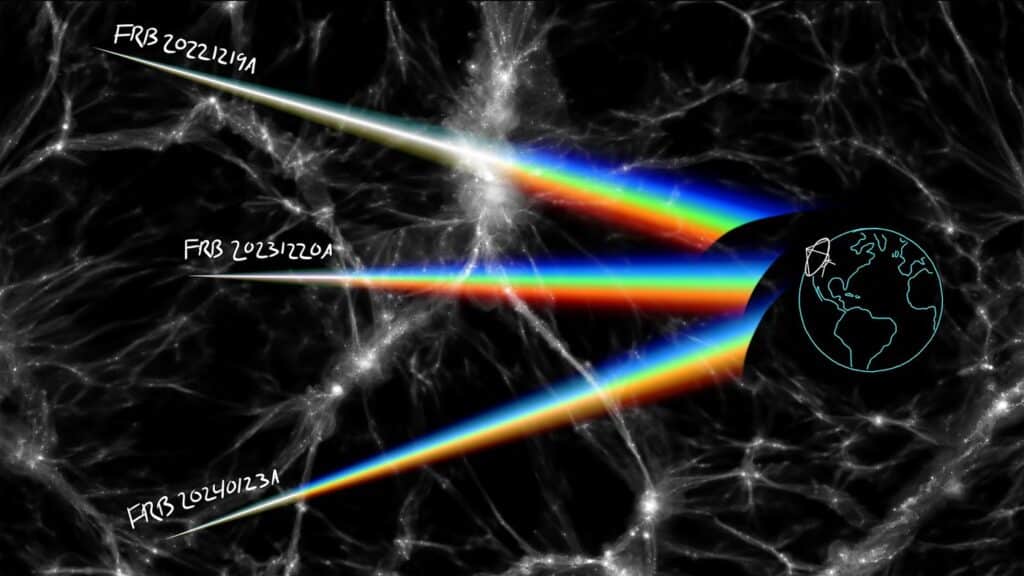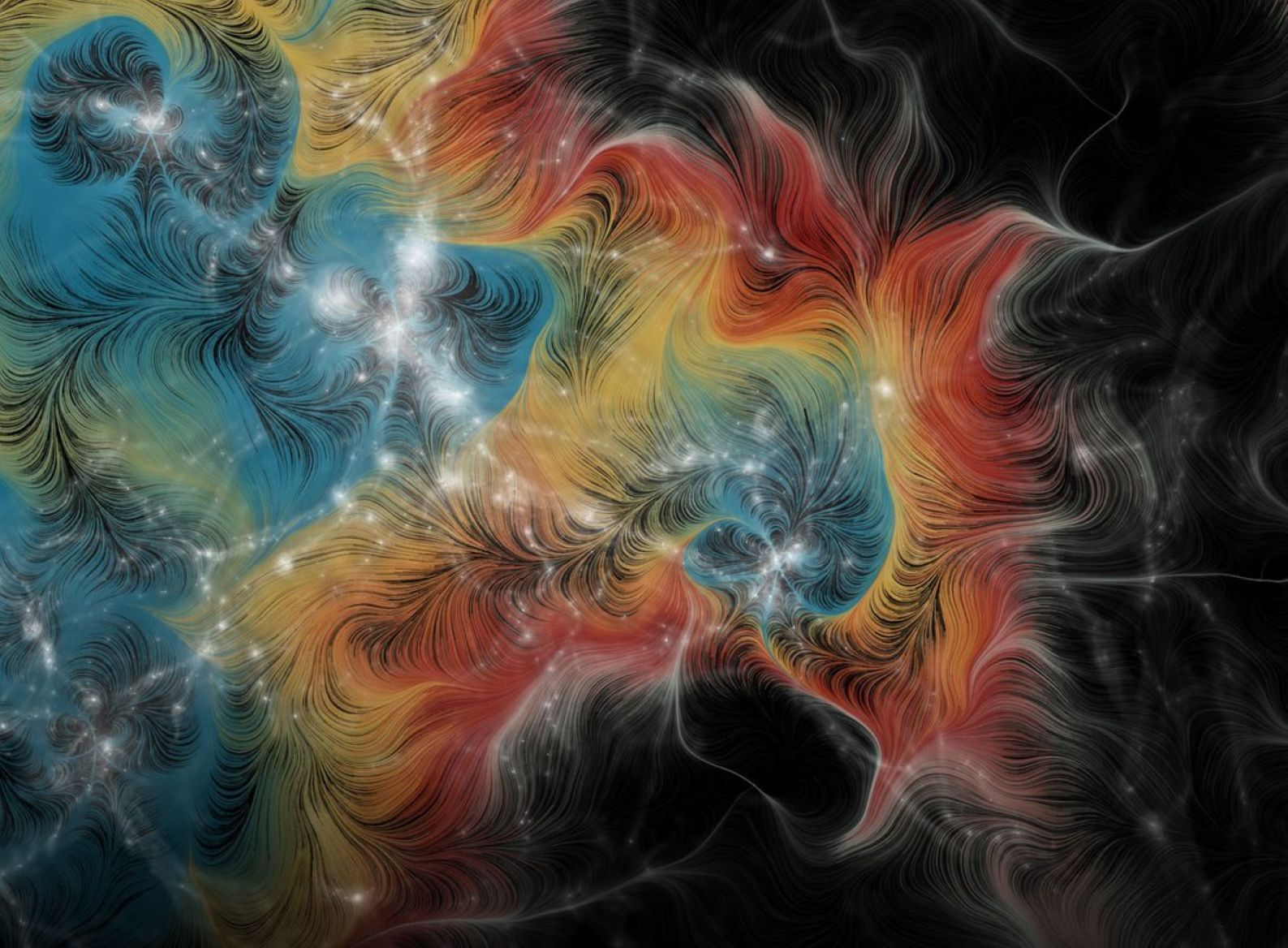Think of the universe as a giant cosmic puzzle, and for years, a big piece of it was missing. About half of the universe’s mysterious dark matter is packed into dense clumps called halos, which help hold galaxies together. However, these halos contain less than half of the normal matter, which includes stars, planets, and people. Only a small bit of it glows as stars or floats as gas inside galaxies.
So where’s the rest? It’s hiding in plain sight, spread out as a super-thin, invisible mist of ionized gas between galaxies and around galaxy clusters. This ghostly gas is nearly impossible to see, but it plays a huge role in shaping galaxies and the universe itself.
Now, scientists have found a clever way to track it down: by using fast radio bursts (FRBs), brief, powerful flashes of energy from distant galaxies. As these bursts travel through space, they pass through the hidden gas, helping scientists finally measure just how much normal matter is out there.
Now, for the first time, astronomers from Caltech and the Center for Astrophysics Harvard & Smithsonian have directly found and measured this missing matter. They used fast radio bursts (FRBs), brief, powerful flashes of radio waves from distant galaxies, as cosmic flashlights. As these signals traveled through space, they slowed down slightly depending on how much matter they passed through.
New hints that dark matter could be made up of dark photons
By analyzing 69 FRBs located at distances ranging from about 11.74 million to about 9.1 billion light-years away, the team discovered that about 76% of the universe’s normal matter lies in the intergalactic medium, solving a long-standing cosmic mystery.
FRB 20230521B, located 9.1 billion light-years away, now holds the record for the most distant FRB ever recorded. Although over a thousand FRBs have been found, only about 100 have been traced back to their home galaxies, which is crucial for knowing how far away they are. The new study relied on 69 of these well-localized FRBs.

Credit: Jack Madden/CfA, IllustrisTNG Simulations
Out of those 69, 39 were discovered using the Deep Synoptic Array-110 (DSA-110), a network of 110 radio telescopes in California built specifically to detect and locate FRBs. This array identified the bursts and their host galaxies, while telescopes in Hawaii and San Diego measured the distances to them. The remaining 30 FRBs came from other telescopes around the world, mainly in Australia.
The team used these FRBs to detect the missing ordinary matter. As the radio waves from fast radio bursts (FRBs) travel through space to reach Earth, they are stretched out into different wavelengths, much like a prism turns sunlight into a rainbow. How much the waves spread out depends on how much matter they pass through along the way.
FRBs solved a decades-old mystery of missing matter
Astronomers have now confirmed where the universe’s normal matter is hiding. They found that about 76% of it is floating in the vast space between galaxies, called the intergalactic medium. Around 15% is in the outer regions of galaxies, known as galactic halos, and the rest, less than 10%, is inside galaxies, in stars or cold gas. This matches what computer models had predicted, but it’s the first time we’ve seen it confirmed through observations.
These findings are important because they help scientists understand how galaxies form and grow. They also show that fast radio bursts (FRBs), brief, powerful flashes of radio waves from space, can help solve big mysteries in physics. One of those mysteries is the mass of neutrinos, tiny particles that barely interact with anything.
According to the standard model of physics, neutrinos should have no mass, but we now know they do—just a very tiny amount. Figuring out their exact mass could lead to discoveries that go beyond what we currently know about how the universe works.
Vikram Ravi, assistant professor of astronomy at Caltech, said, “This is just the beginning of the use of FRBs in cosmology. In the future, Caltech’s DSA-2000 radio telescope in the Nevada desert, currently in the planning stage, will build upon studies like this one. The radio array will find and localize up to 10,000 FRBs per year, dramatically enhancing their role as probes of normal matter and deepening our overall knowledge of the extreme blasts.”
Journal Reference
- Connor, L., Ravi, V., Sharma, K., et al. A gas-rich cosmic web revealed by the partitioning of the missing baryons. Nat Astron (2025). DOI: 10.1038/s41550-025-02566-y
